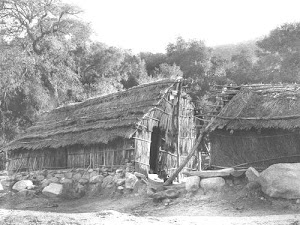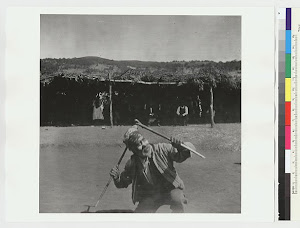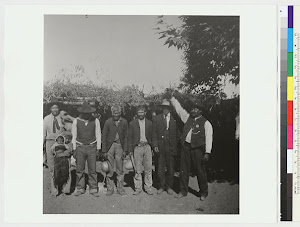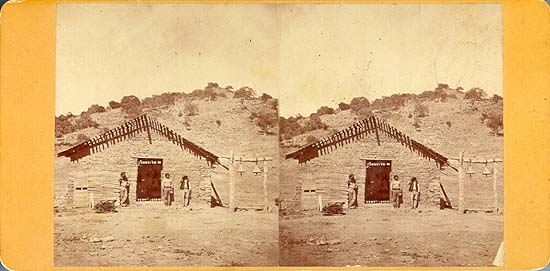How Do You Prove You’re an Indian?
By DAVID TREUER
Published: December 20, 2011
In California, Indian Tribes With Casino Money Cast Off Members (December 13, 2011)
Related in Opinion
Room For Debate: Tribal Rights vs. Racial Justice AMERICA’S first blood quantum law was passed in Virginia in 1705 in order to determine who had a high enough degree of Indian blood to be classified an Indian — and whose rights could be restricted as a result. You’d think, after all these years, we’d finally manage to kick the concept. But recently, casino-rich Indian tribes in California have been using it themselves to cast out members whose tribal bloodlines, they say, are not pure enough to share in the profits.
What is surprising is not that more than 2,500 tribal members have been disenfranchised for apparently base reasons. (It’s human — and American — nature to want to concentrate wealth in as few hands as possible.) What is surprising is the extent to which Indian communities have continued using a system of blood membership that was imposed upon us in a violation of our sovereignty.
In the late 19th and early 20th centuries, the United States government entered into treaties with Indian nations that reserved tracts of land for tribal ownership and use and guaranteed annuities in the form of money, goods or medical care. Understandably, tribes and the government needed a way to make sure this material ended up in the right hands. Blood quantum, and sometimes lineal descent, was a handy way of solving that problem. For instance, if one of your grandparents was included on the tribal rolls and you possessed a certain blood quantum — say, you were one-fourth Navajo — the government counted you as Navajo as well.
But it had another benefit, for the government at least, which believed that within a few generations intermarriage and intermixing would eliminate Indian communities, and the government would be off the hook. “As long as grass grows or water runs” — a phrase that was often used in treaties with American Indians — is a relatively permanent term for a contract. “As long as the blood flows” seemed measurably shorter.
Indians themselves knew how artificial this category of tribal membership was, and could use it to their own advantage. Before my tribe, the Ojibwe, established the White Earth Reservation in Minnesota in 1867, Chief Bagone-giizhig lobbied to exclude mixed-bloods from the rolls — not because they weren’t Indians but because, most likely, they formed a competing trader class. Bagone-giizhig swore they would rob White Earth blind. That he was right is a bit beside the point — he probably wanted to rob it blind himself.
Something similar happened after the passage and subsequent amendment of the Dawes Act of 1887, which established a process of allotment under which vast lands held in common were divided into smaller plots for individual Indians. Although excess land could be sold off, full-blood Indians were forbidden to sell. But whites wanted the land, and sent in a genetic investigator. In short order, the number of registered full-bloods at White Earth Reservation went from more than 5,000 to 126.
After Congress passed the Indian Reorganization Act in 1934, effectively ending the allotment of land, the provisions of blood quantum remained ingrained in Indian communities. They determined if you could vote or run for office, where you could live, if you’d receive annuities or assistance, and, today, if you get a cut of the casino profits.
Blood quantum has always been about “the stuff,” and it has always been about exclusion. I know full-blooded Indians who have lived their entire lives on reservations but can’t be enrolled because they have blood from many different tribes, and I know of non-Indians who have been enrolled by accident or stealth just because they’ll get something out of it.
Things were different once. All tribes had their own ways of figuring out who was a member — usually based on language, residence and culture. In the case of the Ojibwe, it was a matter of choosing a side. Especially when we were at war in the early 19th century, with the Dakota — our neighbors (many of whom were our blood relatives) — who you were was largely a matter of whom you killed. Personally, I think this is a more elegant way than many to figure out where you belong.
Who is and who isn’t an Indian is a complicated question, but there are many ways to answer it beyond genetics alone. Tribal enrollees could be required to possess some level of fluency in their native language or pass a basic civics test. On my reservation, no schoolchild is asked to read the treaties that shaped our community or required to know about the branches of tribal government or the role of courts and councils. Or tribal membership could be based, in part, on residency, on some period of naturalization inside the original treaty area (some tribes do consider this). Many nations require military service — tribes don’t have armies, but they could require a year of community service.
Other nations take these things into account, and in doing so they reinforce something we, with our fixation on blood, have forgotten: bending to a common purpose is more important than arising from a common place.
Of course, just remaining alive and Indian for the last 150 years has been one of the hardest things imaginable. A respect for blood is a respect for the integrity of that survival, and lineage should remain a metric for tribal enrollment. But not the only one. Having survived this long and come this far, we must think harder about who we want to be in the future, and do something more than just measure out our teaspoons of blood.
David Treuer, an Ojibwe Indian, is the author of the forthcoming “Rez Life.”
Thursday, January 12, 2012
Interesting article on Blood Quantum
Posted by
Karen Vigneault Librarian
at
12:52 PM
![]()
Subscribe to:
Post Comments (Atom)













No comments:
Post a Comment